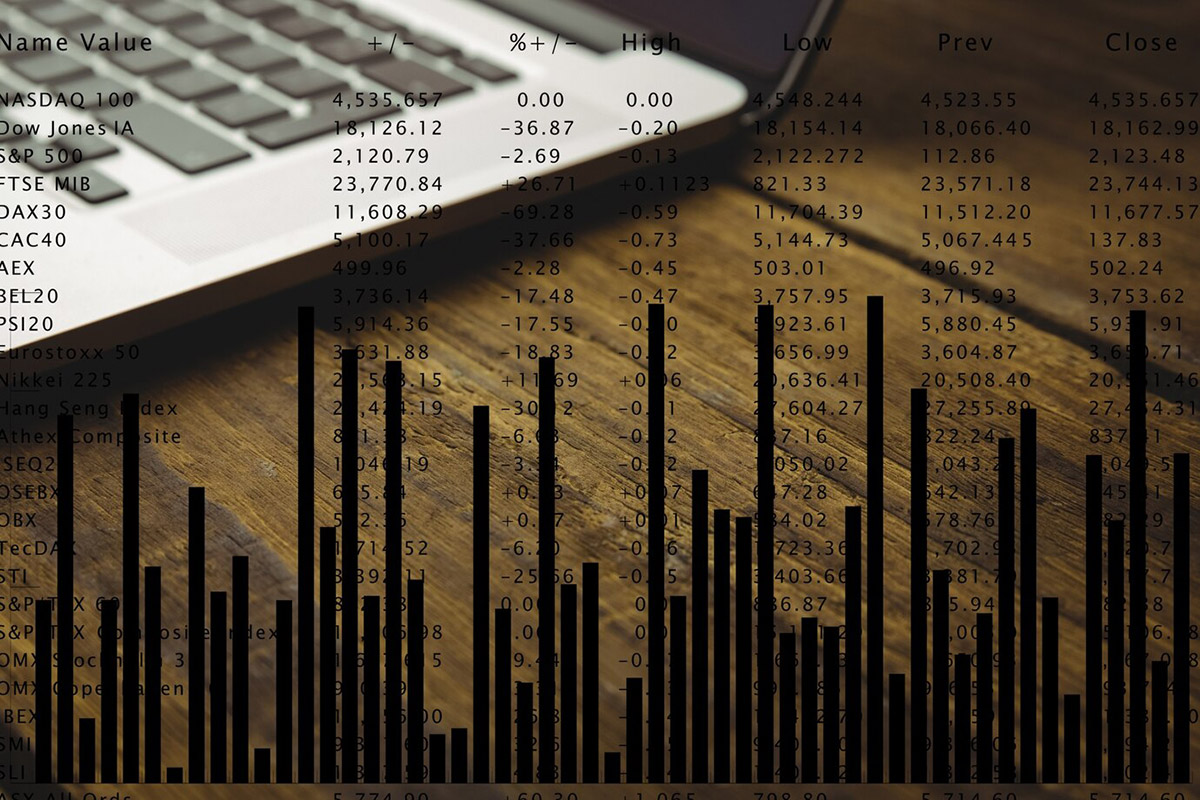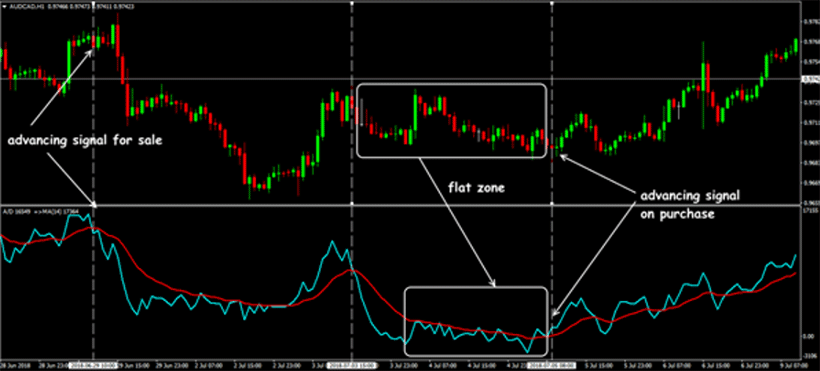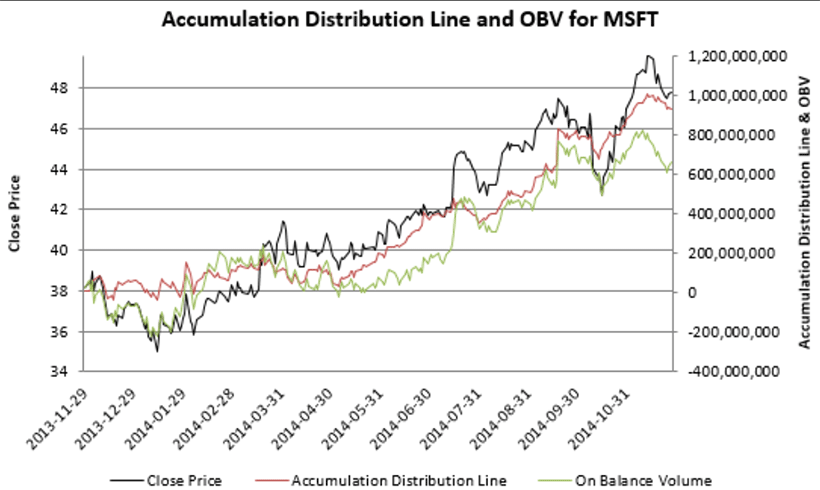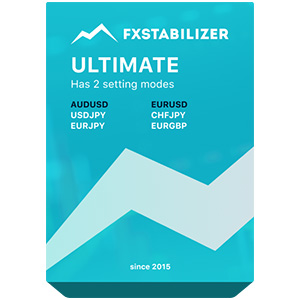
蓄積/分配インジケーター(A/Dと略される)は、価格の動きと取引量を同時に分析するために設計された多くのテクニカルインジケーターの1つです。これらのデータが相互に関連しているため、A/Dは取引量が価格にどのように影響するかを理解するのに役立ちます。このツールを効果的に使用するには、ますます外国為替市場での蓄積と分配が何であり、それらを正しく解釈する方法を理解する必要があります。
蓄積/分配インジケーターとは?

外国為替市場における蓄積と分配とは何かを詳しく見てみましょう。A/Dは、特定の資産への投資の強度を測定するのに役立ちます。価格と取引量に応じて、大口取引者が資産を買い集めているか、それとも売却して市場全体に分散させているかを判断することができます。外国為替市場における蓄積と分配を使用してトレンドの強度も特定できます。トレーダーは再び取引量を見て、価格の上昇または下落と比較します。価格が取引量とともに上昇している場合、強い上昇トレンドを示しています。取引量と価格がともに下落している場合、トレンドは弱いか下降しています。
蓄積/分配(A/D)インジケーターの動作方法
今、累積分配指標とは何か、そしてどのように使用して興味のあるデータを特定するために累積分配指標を使用するかを見てみましょう。累積分配ラインを使用すると、時間枠内での取引量と価格の動きを上下に見ることができます。取引量と価格の動きが一致すると、大口取引者が積極的に買い付けていることを示します。価格が急落すると、大口取引者が資産を売却していることを意味します。このようにして、トレンドや市場センチメント(上昇トレンドまたは下降トレンド)を観察し、それに応じて取引に参加または退出するタイミングについての決定を行うことができます。すべては個々の状況に依存するため、一つの正解はありません。トレンドに従って適切に買い付けまたは売却するか、他の指標が潜在的な反転を示唆している場合は逆行することもできます。
累積分配(A/D)指標の式と計算方法
累積/分配指標を正確に計算するには、次の式が使用されます:

この式を使用して累積と分配をどのように特定するか? A/Dはあなたの時間枠で見る値です。この方程式では、Closeは終値を表し、HighとLowはそれぞれ選択した時間枠内の最大価格と最小価格を示します。式中のVolumeは取引量を指します。
累積分配(A/D)指標の解釈
あなたのケースで累積分配指標をどのように使用するか? これを行うには、このツールのシグナルを正しく解釈する必要があります。以下にその方法を示します:
- 資産の蓄積/分配ラインの増加は資産の蓄積を示し、上昇トレンドを確認します。トレーダーにとっては、これは資産価格が引き続き上昇する可能性があることを意味します。トレーダーがすでにポジションを取り、最適な時期にそれを閉じるのを待っている場合、より高い利益を確保するためにもう少し待つことが望ましいかもしれません。
- 一方、時間軸での蓄積/分配ラインの減少はトレンドの弱さと下降動向を示します。潜在的な下降反転を示すこともあります。
- 蓄積分配インジケーターForexが価格の動きと乖離を示す場合(価格が上昇するがA/Dインジケーターが下降する)、これはトレンドの勢いの喪失と解釈できます。つまり、価格が取引量のサポートなしに動いているということです。これらの状況は、すでにポジションを保有しているか、ポジションを開くか閉じるかを計画しているかに応じて、あなたの利益に活用することができます。
取引で蓄積/分配インジケーターを使用する方法
蓄積分配サイクルを使用して以下を行います:
- 現在のトレンドを確認します。その強度と勢いを評価して、ポジションを取ることの安全性を確認できます。
- 乖離を特定します。価格と出来高の間の不一致を見つけることで、トレンドが反転する可能性がある瞬間を特定できます。
- ブレイクアウトを確認します。通常、これを決定するためにサポートとレジスタンスラインが使用されますが、Forexの蓄積と分配はブレイクアウトの妥当性を確認し、他のインジケーターを使用して行った仮定と予測を支持または反論するのに役立ちます。
蓄積/分配インジケーター(A/D)vs. オンバランスボリューム(OBV)

累積/分配インジケーターがOn-balance Volume(OBV)インジケーターに非常に似ていることを考慮すると、初心者はそれらを混同するかもしれません。両方とも取引量を測定することを目的としているため、これは驚くべきことではありません。ただし、これらのツールの間にはまだ違いがあります。
- A/Dインジケーターは、ユーザーが選択した時間枠内の価格の高値と安値(高値-安値)を考慮に入れます。一方、OBVは、単独での取引量の上昇または下降を示します。
- A/Dの式は、同時により多くの要因を考慮することを可能にし、結果をより正確にします。累積と分配の段階は、短期市場トレンドを決定する際に特に重要であり、シグナルの正確さが意思決定に重要です。
ただし、A/Dは、予測を確認または無効にするためにOn-balance Volumeと併用することができます。ただし、トレーダーはしばしば、価格アクションに焦点を当てた追加のインジケーターや恐怖と強欲指数などの市場センチメントツールといったものと組み合わせてA/D測定を使用する傾向があります。OBVを適切に使用する方法の詳細については、当社の記事On-balance Volume(OBV)インジケーター:包括的なガイドを参照してください。
他のインジケーターとの統合
手動で取引するか、最高のForexロボットを使用するかに関係なく、A/Dインジケーターはトレーダーの意思決定を決定する唯一のシグナルではありません。1つのツールからのシグナルは常に別のツールによって確認されます。A/Dは、次のものと組み合わせて最も効果的に機能します:
- 移動平均線は、偽のシグナルを取り除き、トレンドの強さと方向を明確に示すのに役立ちます。
- ボリンジャーバンドは、A/Dと非常によく合います。A/Dラインがトレンドの弱さを示し、価格ラインが外側のボリンジャーバンドに近づくと、トレンドが弱まっているため、ポジションを解消する時期です。
- RSIは、A/Dインジケーターからのシグナルと非常によく合う別の優れたツールです。RSIは価格変動を追跡し、A/Dから見える結果を補強したり、トレンドの弱さを示す可能性もあるダイバージェンスを明らかにします。
蓄積分布(A/D)インジケーター取引戦略
admaインジケーターを使用した取引の最適なアプローチは、トレンド取引です。たとえば、価格が上昇しているがA/Dラインがまだ下降している場合、トレンド反転が間近に迫っていることに気付き、他の市場参加者より前に売却するのが適切な時期です。これはダイバージェンス戦略とも呼ばれます。A/Dは、市場の罠を避けるために偽のシグナルを効果的に取り除くのに役立ちます。
もう1つの成功したADLインジケーター戦略は、ブレイクアウト取引です。価格がサポートまたはレジスタンスレベルを突破し、A/Dがこれを確認すると、状況に応じて買いポジションまたは売りポジションを取ることができます。
蓄積/分配インジケーター(A/D)の利点と制限
蓄積分布Forexインジケーターには、信号の精度、偽のシグナルを取り除く能力、および多くの他のインジケーターとの優れた互換性など、多くの利点があります。蓄積/分配Forexインジケーターの唯一の欠点は、流動性の低い市場での精度の低下です。そのような場合は、追加のツールを使用してシグナルを確認することが重要です。
A/Dインジケーター:外国為替トレーダーのための実用的なヒント
効率を向上させ、損失を最小限に抑えるためのさらなるヒントを以下に示します:
- 他のツールと組み合わせて、Forex蓄積分布を使用します。
- 流動性の低い資産を取り扱う際には、他の指標に頼ります。
- 市場の包括的な視点を得るために、複数の時間枠でデータを確認します。
結論
Forex蓄積分布を使用して市場のセンチメントを判断し、トレンドの勢いを評価します。他のいくつかのツールを補完することで、資産に関するよく考えられた収益性の高い決定を行うことができます。









